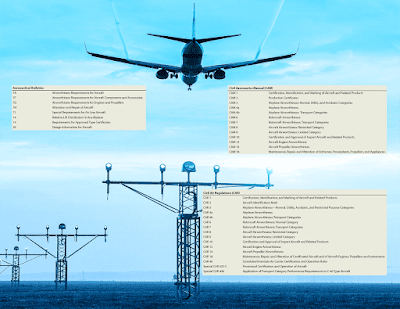Prior to 1926, access to flying was uncontrolled. No licensing or certification was required. By the middle of the 1920s, it became obvious that unregulated private and commercial flying was dangerous. There was a growing awareness and acceptance that regulation could improve safety and encourage growth in aviation. Therefore in 1926, the aviation industry requested Congress to enact federal legislation to regulate civil aviation. Thus, the Air Commerce Act of 1926 provided for the:
Predecessor Regulations to the Federal Aviation Regulations (14 CFR)
RELATED POSTS
- Establishment of airways
- Development of aviation aids
- Investigation of aviation accidents
- Licensing of pilots
- Certification of aircraft
The Civil Air Regulations (CARs) were part of the original certification basis for aircraft first certified in the 1940s, 1950s, and 1960s by the Civil Aviation Authority (CAA). Therefore, the CARs may still be needed as a reference for these older aircraft or as a standard for minor changes to older aircraft designs.
Predecessor Regulations to the Federal Aviation Regulations (14 CFR)
Aeronautical Bulletins
- 7A— Airworthiness Requirements for Aircraft
- 7F— Airworthiness Requirements for Aircraft Components and Accessories
- 7G— Airworthiness Requirements for Engines and Propellers
- 7H— Alteration and Repair of Aircraft
- 7J— Special Requirements for Air Line Aircraft
- 14— Relative Lift Distribution in Any Biplane
- 14— Requirements for Approved Type Certificates
- 26— Design Information for Aircraft
Civil Air Regulations (CAR)
- CAR 1— Certification, Identification, and Marking of Aircraft and Related Products
- CAR 2— Aircraft Identification Mark
- CAR 3— Airplane Airworthiness—Normal, Utility, Acrobatic, and Restricted Purpose Categories
- CAR 4a— Airplane Airworthiness
- CAR 4b— Airplane Airworthiness: Transport Categories
- CAR 6— Rotorcraft Airworthiness: Normal Category
- CAR 7— Rotorcraft Airworthiness: Transport Categories
- CAR 8— Aircraft Airworthiness: Restricted Category
- CAR 9— Aircraft Airworthiness: Limited Category
- CAR 10— Certification and Approval of Import Aircraft and Related Products
- CAR 13— Aircraft Engine Airworthiness
- CAR 14— Aircraft Propeller Airworthiness
- CAR 18— Maintenance, Repair, and Alteration of Certificated Aircraft and of Aircraft Engines, Propellers and Instruments
- CAR 40— Scheduled Interstate Air Carrier Certification and Operation Rules Special
- CAR 425-C— Provisional Certification and Operation of Aircraft Special
- CAR 406— Application of Transport Category Performance Requirements to C-46 Type Aircraft
Civil Aeronautics Manual (CAM)
- CAM 1— Certification, Identification, and Marking of Aircraft and Related Products
- CAM 2— Production Certificates
- CAM 3— Airplane Airworthiness: Normal, Utility, and Acrobatic Categories
- CAM 4a— Airplane Airworthiness
- CAM 4b— Airplane Airworthiness: Transport Categories
- CAM 6— Rotorcraft Airworthiness
- CAM 7— Rotorcraft Airworthiness: Transport Categories
- CAM 8— Aircraft Airworthiness: Restricted Category
- CAM 9— Aircraft Airworthiness: Limited Category
- CAM 10— Certification and Approval of Import Aircraft and Related Products
- CAM 13— Aircraft Engine Airworthiness
- CAM 14— Aircraft Propeller Airworthiness
- CAM 18— Maintenance, Repair, and Alteration of Airframes, Powerplants, Propellers, and Appliances
CAR 4a—Airplane Airworthiness
This regulation was originated in 1936 and last amended on December 15, 1952. The subparts included in this regulation are:
- A—Airworthiness Requirements
- B—Definitions
- C—Structural Loading Conditions, General Structural Requirements
- D—Proof of Structure
- E—Detail Design and Construction
- F—Equipment
- G—Powerplant Installation
- H—Performance
- I—Miscellaneous Requirements
Initially, this regulation was the basis for establishing the design requirements for virtually all produced aircraft in the 1930s, 1940s, and 1950s. Eventually CAR 3 evolved as the regulatory material specific to small aircraft, and CAR 4a and b focused on regulatory requirements for large aircraft.
It is very important to review the TCDS for each aircraft. For example, The Cessna 140 was certified as a landplane under CAR 3, but under CAR 4a as a ski-plane or seaplane. Another example of a more current and larger aircraft is the Gulfstream 1159 and 1159A. The former is certified under CAR 4b, but the latter is certified to 14 CFR part 25.

